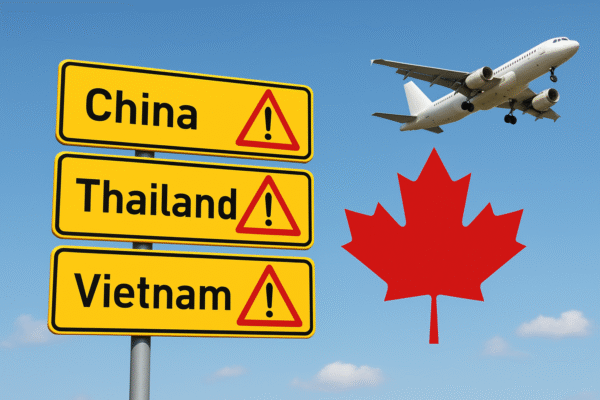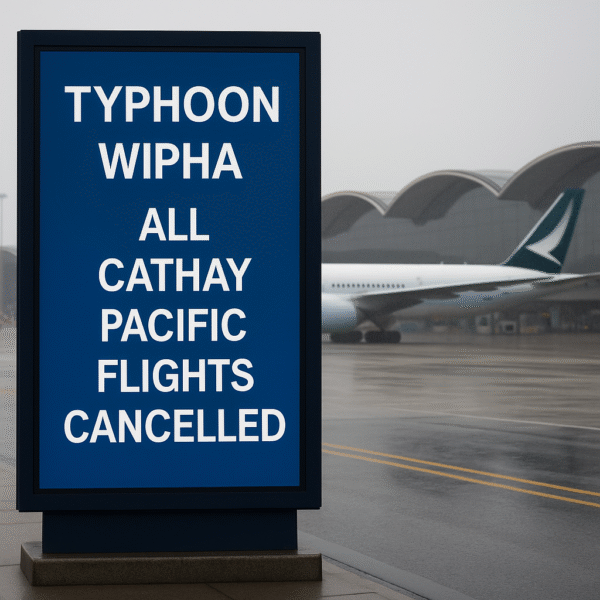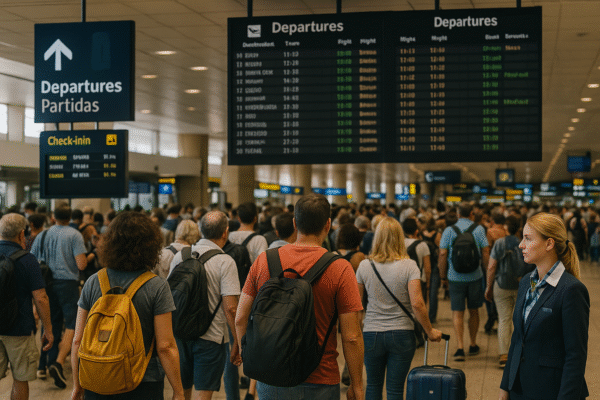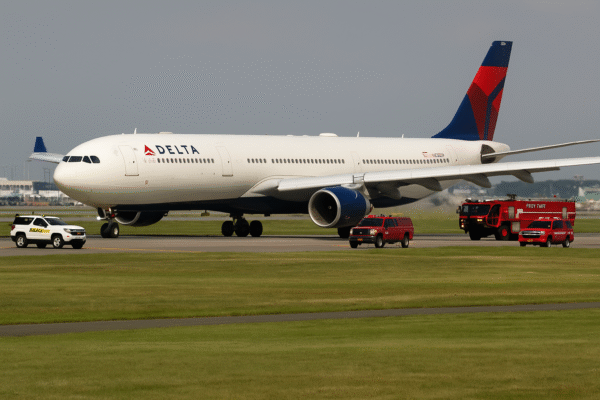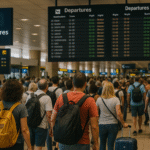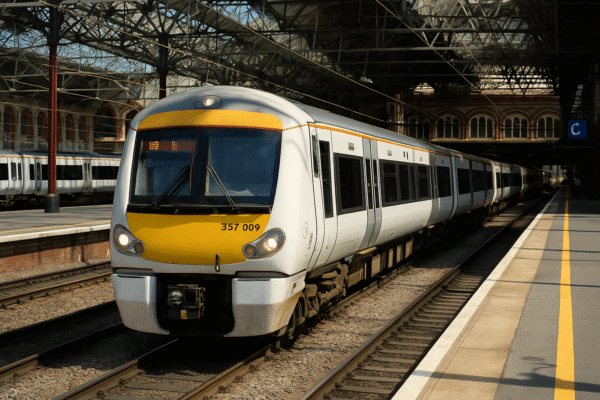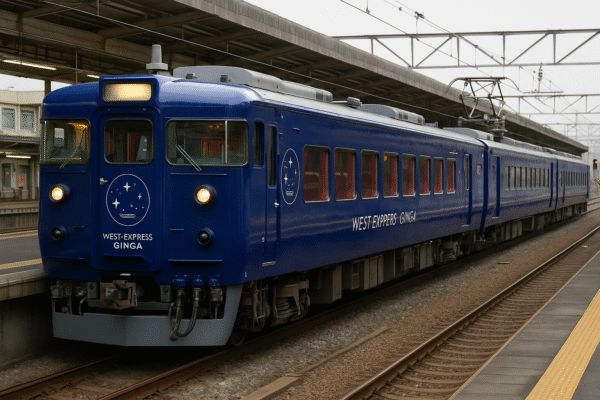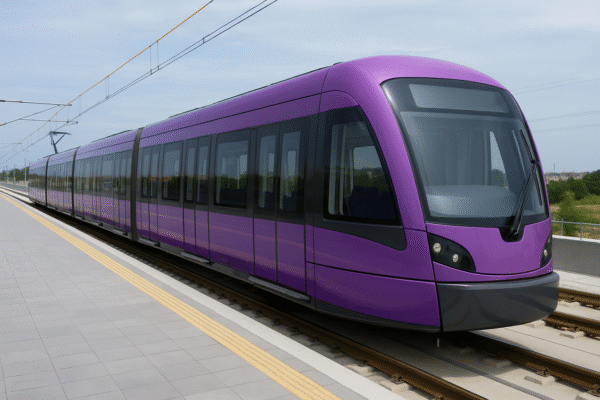Queens, New York – July 18, 2025 — A Delta Air Lines Airbus A330-300 operating as Flight 183 triggered a brief but significant disruption at John F. Kennedy International Airport (JFK) on Friday afternoon after encountering a hydraulic system failure upon landing. The flight, arriving from Frankfurt with 266 passengers onboard, made a safe emergency landing at approximately 1:30 p.m. local time. While no injuries were reported, the incident necessitated a temporary FAA-issued ground stop and prompted a full response from emergency services.
Emergency Declared in the Skies Over New York
Shortly before its descent, the flight crew of DL183 detected a critical issue in the aircraft’s hydraulic systems, prompting them to declare an emergency with JFK air traffic control. The aircraft landed without visible incident, but upon stopping on the runway, a partial gear collapse attributed to the hydraulic failure occurred, rendering the aircraft immobile until ground crews intervened.
Emergency response teams from the Port Authority of New York and New Jersey were on hand within minutes. Passengers were safely deplaned and escorted to the terminal with minimal delay. By 2:30 p.m., the Federal Aviation Administration lifted its ground stop, allowing regular flight operations to resume at JFK.
FAA and Delta Air Lines Respond Swiftly
The FAA stated that the incident led to a precautionary pause in both inbound and outbound flights, but emphasized that operational disruption remained limited. “Passenger safety remains our top priority,” a Delta Air Lines spokesperson said. “Our crew followed all emergency protocols, and the aircraft was met by emergency services purely out of an abundance of caution.”
The aircraft involved was an Airbus A330-300—a wide-body aircraft used by Delta for international long-haul routes. Maintenance teams began immediate inspections, while the FAA launched a formal investigation into the failure of the hydraulic systems, which control essential functions such as landing gear, brakes, and flight controls.
Ground Stop and Delays at JFK
The ground stop enacted by the FAA was short-lived, lasting roughly one hour. Although one runway was temporarily closed, JFK Airport continued to manage air traffic with minimal disruption. According to the Port Authority, proactive coordination between the FAA, Delta, and JFK ground operations ensured a smooth transition back to full service.
“We saw quick mobilization of airport services to prevent cascading delays,” said a Port Authority representative. “The priority was ensuring the safety of passengers while restoring operations without compromising security.”
Impact on Travel and Airline Reputation
The safe landing, despite a potentially dangerous mechanical failure, served as a case study in aviation risk management. In the era of heightened concern over in-air emergencies, this incident underscores the rigorous training and responsiveness of airline crews, air traffic controllers, and airport personnel.
For passengers and travelers flying to or from JFK, the swift resolution of the situation helped minimize inconvenience. By early evening, JFK had resumed full operations with only minor residual delays affecting a few connecting flights.
Delta’s Aircraft Safety Protocols Under Scrutiny
While no official fault has yet been determined, Delta Air Lines confirmed that the aircraft will remain grounded pending thorough maintenance inspections and FAA clearance. The airline emphasized that it is fully cooperating with all regulatory bodies and will undertake all necessary corrective actions, including system testing and additional pilot training reviews if deemed necessary.
Aviation analysts note that the hydraulic failure is a rare but serious issue in modern aircraft. The Airbus A330, like other wide-body models, features redundant hydraulic systems designed to mitigate complete system failure. However, partial hydraulic losses—particularly in landing scenarios—can still pose serious safety challenges.
What This Means for Passengers and JFK
Travelers at JFK can remain confident in the airport’s preparedness for emergency situations. The FAA’s decision to initiate and then promptly lift the ground stop reflects the level of operational flexibility required at major international hubs.
For Delta, whose international network includes dozens of daily flights through JFK, the event underscores the importance of preventive maintenance and continuous crew training. As New York’s busiest international airport, JFK’s ability to contain the incident further boosts its operational credibility.
Final Thoughts
Delta Flight 183’s emergency landing and the rapid response at JFK highlight the strength of modern aviation safety protocols and crisis coordination. While any in-air emergency generates understandable concern, the professionalism demonstrated across the board—from the flight crew to ground teams—ensured that all passengers were safe and operations were quickly normalized.
As the FAA continues its investigation into the hydraulic malfunction, this event serves as a powerful reminder of the complexity and precision of air travel. For travelers, it reinforces the confidence that safety remains the aviation industry’s guiding principle—even in the face of unexpected mechanical failures.
Delta’s swift, transparent communication and JFK’s seamless recovery from the incident stand as an example of best practices in international airport operations.
For more travel news like this, keep reading Global Travel Wire





